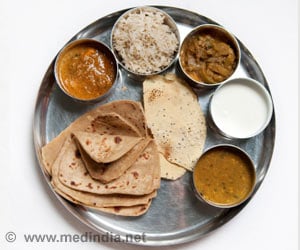Census 2011 spotlights the problem of India's missing girls with the data showing that the ratio of female to male children at its lowest level.

"The figures should make us think 100 times before we call ourselves citizens of a progressive nation," said Delhi University social scientist Gitika Vasudev.
India's sex ratio has been falling continuously since 1961, when it stood at 976 girls for every 1,000 boys, and Vasudev said the latest data was "proof of India's collective failure" to protect girl children.
The global average is 1,050 girls for every 1,000 boys.
Married women in India face huge pressure to produce male heirs who are seen as breadwinners, family leaders and carers when parents age.
Girls are often viewed as a burden to the family as they require hefty dowries to be married off.
"Measures put in place over the last 40 years have not had any impact on the ratio," conceded India's home secretary G.K. Pillai, announcing the need for a "complete" family planning policy review.
India has a long history of female infanticide -- of girls suffocated, poisoned, drowned or left to die.
More common now, thanks to technological advances, is the abortion of female foetuses, or "female foeticide" -- a simple, cheap and difficult to police process with ultrasound tests costing as little as $10.
Signboards at clinics stipulating: "No sex determination tests done here" often pay little more than lip service to the law, and portable ultrasound machines mean tests can be carried out in the most remote villages.
As many as half a million female foetuses are estimated to be aborted each year in India, according to a 2006 study by British medical journal Lancet.
Social activists say legal safeguards have been rendered toothless by official apathy.
"It's not difficult to trace doctors who perform these tests but the government has not found it important enough to nab them," says gynaecologist D.P. Roy, director of "Beti ka Saath" or "A Daughter is a Companion", a voluntary group in the northern state of Haryana.
"Instead of spending money on seminars and public meetings, the government should post a cash reward for anyone who helps catch offenders," she said.
In the last few decades, successive governments have launched an array of schemes to change attitudes towards girls, including offering cash incentives, but they have had little impact.
There had been hopes that the growing affluence produced by India's rapid economic rise would help erode long-held prejudices, but some analysts say it has actually reinforced them.
"It's a misconception that English-speaking, suave, rich Indians do not use sex determination tests," said P.M. Kulkarni, a demography expert at New Delhi's Jawaharlal Nehru University.
"Shockingly, some rich Indians believe they have a right to choose whether they want a boy or a girl," Kulkarni said. "Society has to change, mindsets have to change, attitudes need to change to save the girl child."
Source-AFP











